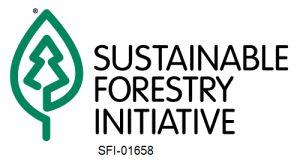Road Plans
The Five year Access Plan outlines Spray Lake Sawmills’ proposed road use and potential corridor development for the next five years. Existing dispositions and proposed corridors are identified. The access plan focuses on roads with a period of use greater than five years, although some temporary roads are identified on the maps.
CORRIDOR PLANNING
A Timber Supply Analysis to develop a spatial timber harvest sequence was completed for the FMA as part of the Detailed Forest Management Plan (DFMP). Preliminary access routes for both main and operational corridors have been identified on the access maps as per SLS’ Detailed Forest Management Plan, Chapter 3, Long-Term Road Strategy. The access plan only identifies corridors associated with the spatially sequenced areas proposed for the next five years.
The model chose corridor locations based on an interpretation of the current DEMs in balance with other parameters such as sidehill slopes, limiting stream crossing frequency, and maintaining grades. Final locations will be determined through intensive ground truthing and compatibility with FireSmart or Mountain Pine Beetle control strategies.
COMMUNICATIONS AND INTEGRATION
Opportunities to facilitate the exchange of information and garner public input are promoted at various planning stages. Copies of the Five Year Access Plan are provided to known commercial stakeholders, and to municipal and provincial government agencies. Stakeholders are informed of both long-term corridor potential and proposed temporary roads during the preliminary and annual operations planning stages.
Formal Road Use Agreements are promoted between SLS and other road disposition holders for road networks within the FMA or C5 quota. This requirement is generally limited to operations that could negatively impact road integrity or interrupt SLS’s scheduled operations. SLS supports joint use and coordinated development of access as a means of minimizing disturbance to the forest landbase and reducing individual costs. A master road use agreement exists between SLS and several oil and gas companies.
The majority of Spray Lake Sawmills’ roads are open for public use. Cautionary signs are posted to identify active log haul routes. Public access is limited only where road closure is a condition of the disposition or operational approval. Please exercise caution when travelling on any bush road.
MOUNTAIN PINE BEETLE STRATEGY
The Sustainable Resource Development, Forest Health Office has identified several areas within the FMA with the highest potential for Mountain Pine Beetle (MPB) infestation. They include the area east of Lake Minnewanka, and the Kananaskis Valley in the vicinity of Barrier Lake. There is also potential for beetle incursions in the Baril Creek area of the Highwood compartment. Of the two northern areas, Barrier Lake poses the greatest risk of infestation. Several additional beetle incursion risk areas have been identified within the C5 Management Unit.
SLS will continue to work with the Strategic Directions Council to develop beetle control strategies. Access route development to implement beetle control measures should be a priority. SLS invites SRD to endorse strategies to limit beetle infestation and spread by supporting the proactive development of roads into high-risk areas. As harvest plans progress, the schedule of operations can be amended to address mountain pine beetle infestations that threaten SLS’s timber supply.
MAPS AND TABLE
The table lists the areas planned for operations during this five year period. Roads held under disposition, that are proposed for use during the five-year period, are listed in association with each operating area. Access controls are identified where required and the control authority is indicated.
Detailed forest management plans are currently being prepared for both the C5 Management Unit and the FMA. Potential corridors are identified for the spatially sequenced harvest areas for the FMA. Within the C5 Management Unit only the current years blocks are identified as no spatial sequence or road information is available for the C5 map.
OPERATIONAL PHASES
C – Construction: right of way clearing and grade construction
M – Maintenance: up-keep of running surface, crossings and erosion controls
R – Reclamation: may include berms, bridge removal, cross-ditching, redistribution of surface strippings, recontouring or any combination of these practices
A – Agreement: authority for road use is required or granted under a formal road use agreement
A* – Authorization: required for entry and road use during the OIC seasonal closure period.



